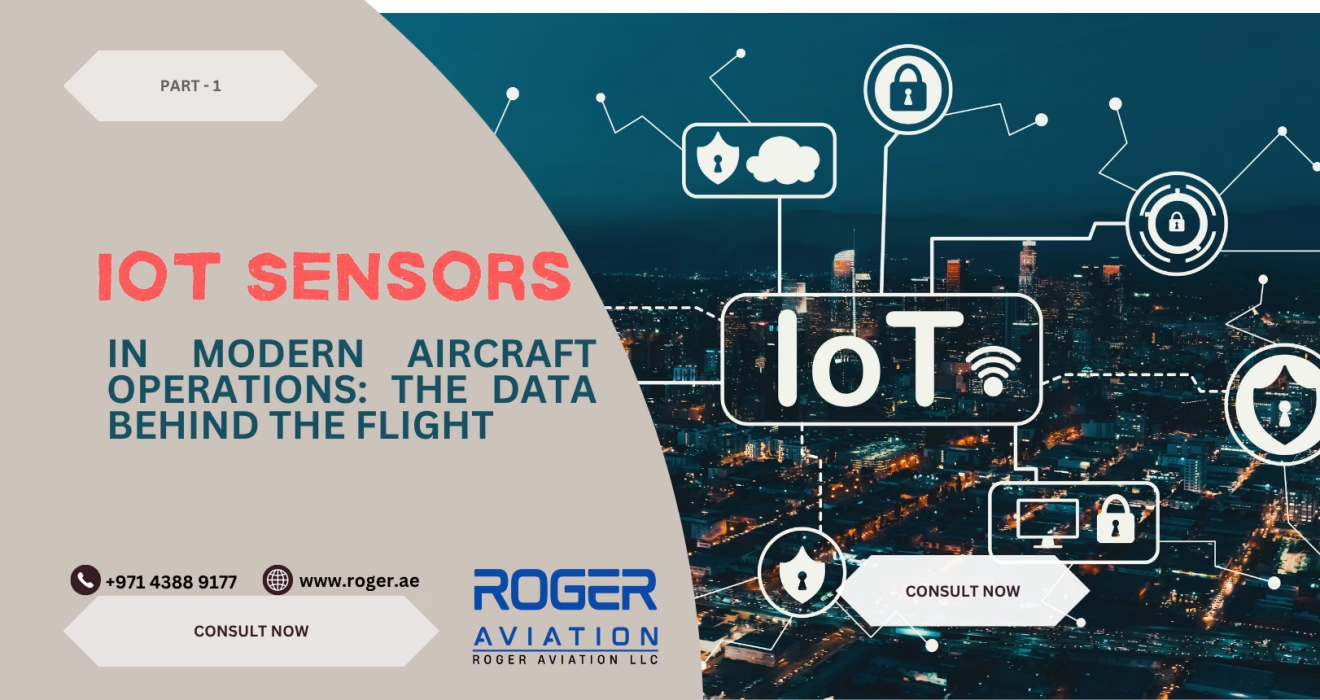IoT Sensors in Modern Aircraft Operations: The Data Behind the Flight
(Part 1 of the “IoT & Predictive Analytics in Aviation” Series by Roger Aviation LLC)
In the age of connected skies, data has become as vital as jet fuel. Behind every safe takeoff, efficient route, and smooth landing lies a web of IoT sensors — quietly collecting millions of data points every second. This invisible network is redefining how airlines, engineers, and regulators view aircraft health and performance.
🛰️ What Are IoT Sensors in Aviation?
IoT (Internet of Things) sensors are embedded devices installed across aircraft systems — from engines and landing gear to cabin pressure controls and avionics. These sensors transmit real-time data to maintenance control centers, enabling continuous monitoring of an aircraft’s condition.
Each flight generates terabytes of data. Every vibration, temperature shift, or fuel pressure change tells a story — a story that modern analytics can read to predict failures before they happen.
⚙️ The Data Revolution in Flight Operations
Historically, aircraft maintenance relied on scheduled checks and manual inspections. Today, with IoT integration, aviation has shifted from reactive to predictive models.
Here’s how:
- 🧠 Predictive Maintenance: IoT data allows early detection of potential component failures, reducing unplanned downtime.
- 📊 Performance Optimization: Real-time engine monitoring enables pilots and control centers to adjust parameters for optimal efficiency.
- 🛫 Fuel Efficiency Tracking: Data-driven analysis minimizes excess fuel burn and carbon emissions.
- 🛰️ Fleet-Wide Insights: Centralized dashboards help airlines analyze performance trends across their entire fleet.
Airlines leveraging predictive analytics report up to 35% reduction in maintenance costs and 25% fewer delays — results that go straight to the bottom line.
🌍 IoT in Action: A Global Shift
The aviation industry’s adoption of IoT is not a distant dream — it’s already in full throttle.
- Boeing and Airbus aircraft now come equipped with thousands of onboard sensors, each transmitting critical metrics during flight.
- Dubai International Airport and other smart hubs are using IoT systems for real-time ground operations, minimizing congestion and delays.
This global trend is propelling smart aviation ecosystems, where every component — aircraft, hangar, and runway — communicates seamlessly.
🔧 Roger Aviation’s Role in the Connected Future
At Roger Aviation LLC, we help organizations bridge traditional maintenance systems with IoT-driven analytics. Our solutions focus on:
- Integrating MRO (Maintenance, Repair, Overhaul) platforms with real-time sensor data
- Supporting CAMO and AMOS integration for continuous airworthiness
- Building predictive dashboards that empower airlines to act — not react
The result? A unified, intelligent, and data-driven aviation operation built for the future.
🚀 What’s Next
This is just the first step. In Part 2, we’ll dive deeper into Predictive Analytics in Aviation — exploring how artificial intelligence transforms raw sensor data into actionable insights that can prevent AOG (Aircraft on Ground) events and improve operational ROI.
Stay tuned — because in aviation, data doesn’t just tell the story, it writes the future.
IoT in aviation, predictive maintenance, aircraft data analytics, MRO software, smart aviation, Roger Aviation, real-time monitoring, AI in aviation, flight safety, aircraft IoT sensors, aviation data integration

